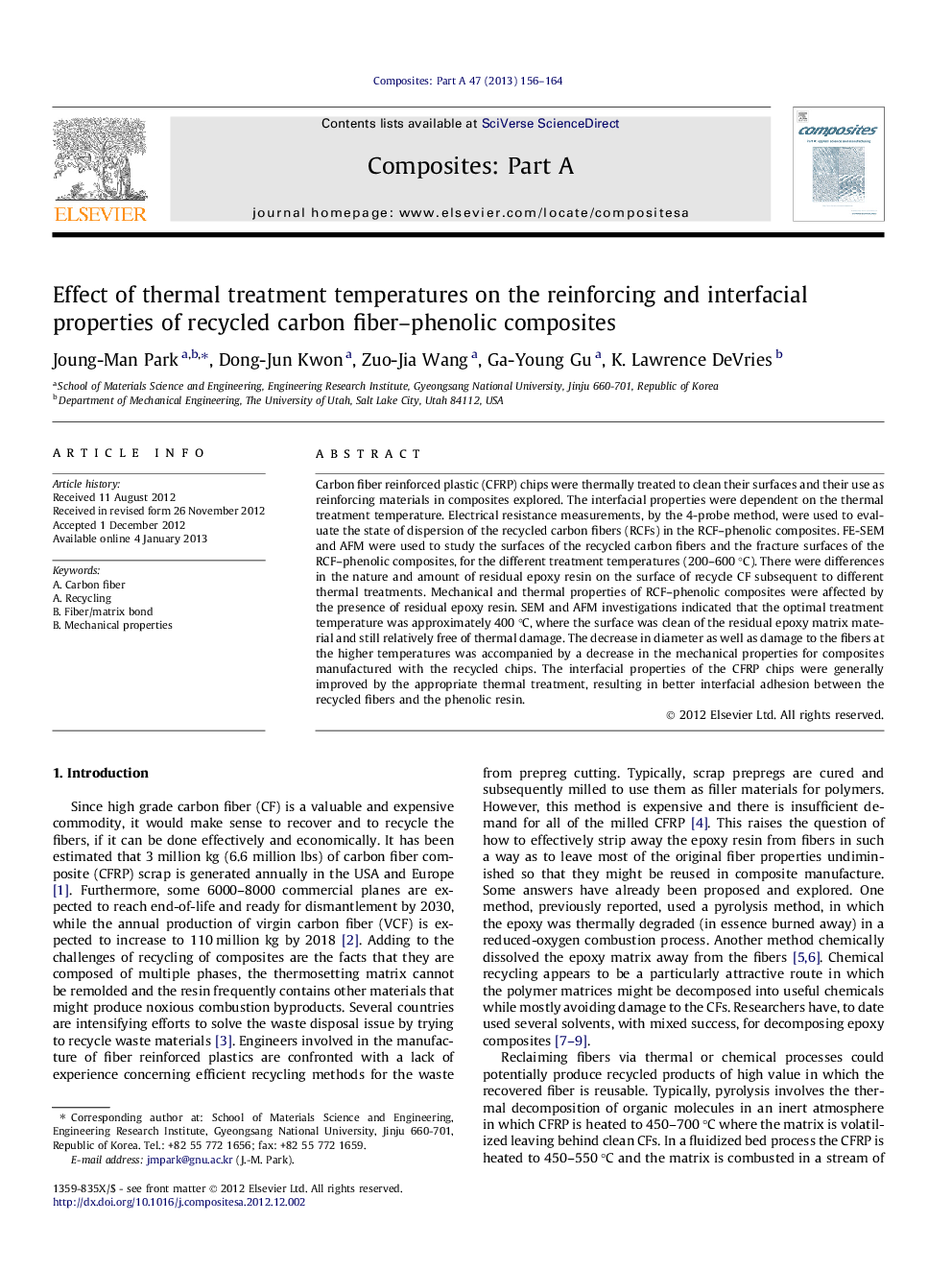| Article ID | Journal | Published Year | Pages | File Type |
|---|---|---|---|---|
| 1466427 | Composites Part A: Applied Science and Manufacturing | 2013 | 9 Pages |
Carbon fiber reinforced plastic (CFRP) chips were thermally treated to clean their surfaces and their use as reinforcing materials in composites explored. The interfacial properties were dependent on the thermal treatment temperature. Electrical resistance measurements, by the 4-probe method, were used to evaluate the state of dispersion of the recycled carbon fibers (RCFs) in the RCF–phenolic composites. FE-SEM and AFM were used to study the surfaces of the recycled carbon fibers and the fracture surfaces of the RCF–phenolic composites, for the different treatment temperatures (200–600 °C). There were differences in the nature and amount of residual epoxy resin on the surface of recycle CF subsequent to different thermal treatments. Mechanical and thermal properties of RCF–phenolic composites were affected by the presence of residual epoxy resin. SEM and AFM investigations indicated that the optimal treatment temperature was approximately 400 °C, where the surface was clean of the residual epoxy matrix material and still relatively free of thermal damage. The decrease in diameter as well as damage to the fibers at the higher temperatures was accompanied by a decrease in the mechanical properties for composites manufactured with the recycled chips. The interfacial properties of the CFRP chips were generally improved by the appropriate thermal treatment, resulting in better interfacial adhesion between the recycled fibers and the phenolic resin.
